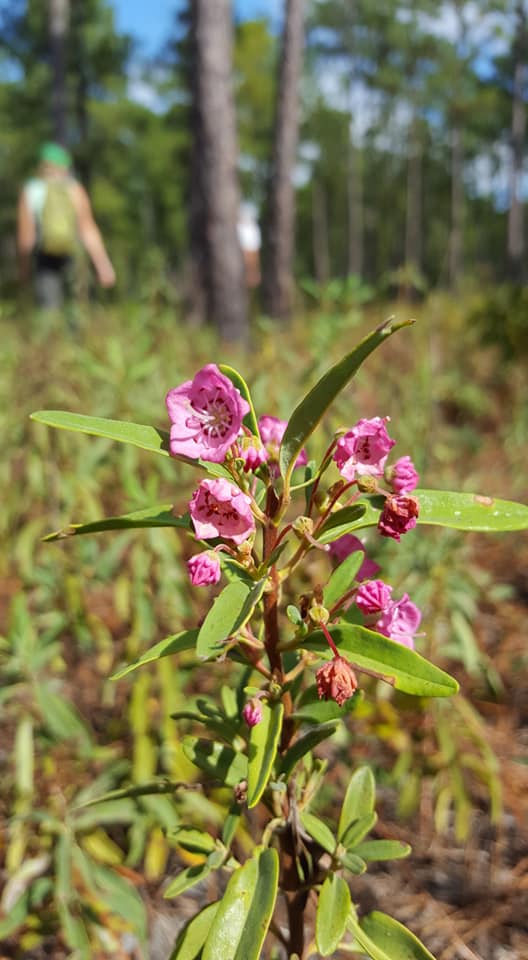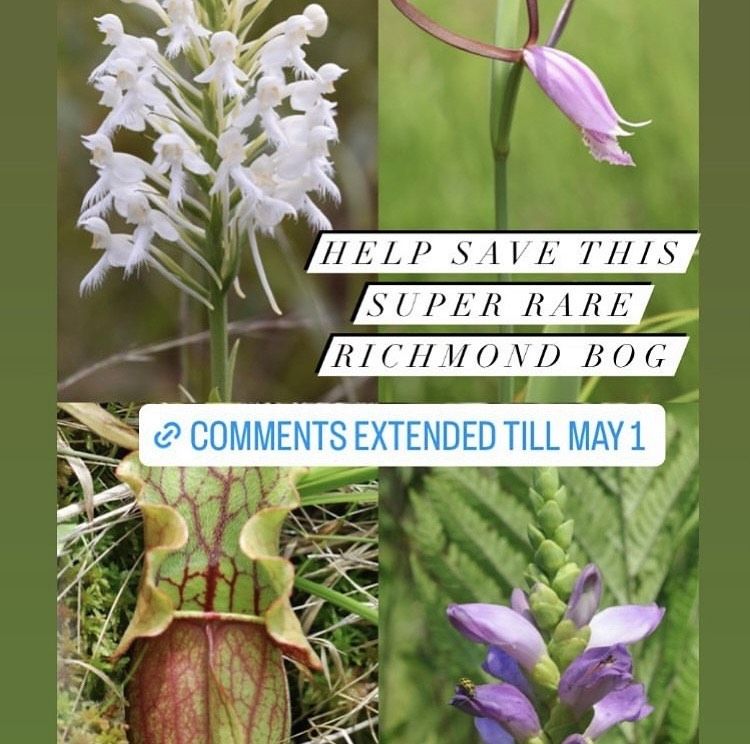Save Richmond’s Last Pitcher Plant Swamp
We have a rare opportunity to comment about a solar facility application (Case # PUR-2022-00179) that is proposed in Chesterfield County (south of Richmond) at a Natural Heritage “Irreplaceable” Site, which has numerous populations of rare plants and an expanse of intact native forests and woodlands that will be harmed if this project progresses. Tell the State Corporation Commission that solar fields don’t belong on Natural Heritage Treasures! The site is referred to as the Chesterfield Solar Technology Park.
Click here to comment in writing.
For case details on PUR-2022-00179, click here.
For a site map, click here.
Here is a list of rare plants known from the site that will be harmed:
- Cuthbert’s Turtlehead – S2G3*
- Red Milkweed – S2G4G5*
- Large Spreading Pogonia Orchid – S1G4*
- Sheep Laurel – S2G5*
- Squarehead – S1G5* – last known population in VA
- Purple Pitcher Plant – S2G5*
- Velvet Sedge – S2G5*
- Small White Fringed Orchid – S2G5*
*Conservation Ranking Protocol from NatureServe
State Conservation Ranking – within Virginia
| S1 | Critically Imperiled — At very high risk of extinction or elimination due to very restricted range, very few populations or occurrences, very steep declines, very severe threats, or other factors. |
| S2 | Imperiled — At high risk of extinction or elimination due to restricted range, few populations or occurrences, steep declines, severe threats, or other factors. |
| S3 | Vulnerable — At moderate risk of extinction or elimination due to a fairly restricted range, relatively few populations or occurrences, recent and widespread declines, threats, or other factors. |
| S4 | Apparently Secure — At fairly low risk of extinction or elimination due to an extensive range and/or many populations or occurrences, but with possible cause for some concern as a result of local recent declines, threats, or other factors. |
| S5 | Secure — At very low risk of extinction or elimination due to a very extensive range, abundant populations or occurrences, and little to no concern from declines or threats. |
Global Conservation Ranking
| G1 | Critically Imperiled — At very high risk of extinction or elimination due to very restricted range, very few populations or occurrences, very steep declines, very severe threats, or other factors. |
| G2 | Imperiled — At high risk of extinction or elimination due to restricted range, few populations or occurrences, steep declines, severe threats, or other factors. |
| G3 | Vulnerable — At moderate risk of extinction or elimination due to a fairly restricted range, relatively few populations or occurrences, recent and widespread declines, threats, or other factors. |
| G4 | Apparently Secure — At fairly low risk of extinction or elimination due to an extensive range and/or many populations or occurrences, but with possible cause for some concern as a result of local recent declines, threats, or other factors. |
| G5 | Secure — At very low risk of extinction or elimination due to a very extensive range, abundant populations or occurrences, and little to no concern from declines or threats. |

Sheep Laurel photo taken during a VNPS field trip to Blackwater Preserve in the Zuni Pine Barrens on October 6, 2018


Please do not disturb this last vestige of native swamp plants. Find another site that will not threaten endangered flora. It’s too late once it’s gone!
As a conservationist and gardener, I am asking that you not create a solar field on what is now a National Heritage “Irreplaceable” Site with many threatened native swamp plants. Please try to find a more suitable site for the Chesterfield Solar Technology Park.
PLEASE do not create a solar farm on top of necessary and needed natural plants! It is absolutely needed for the health of Richmond to keep these ecosystems up and running! There are plenty of other places you could install solar fields without destroying much needed wetlands that will likely get flooded anyway since you’re building in a swamp
This us beyond unnecessary! I’m sure that there are a thousand other places that they can build this. Haven’t we lot enough of the beauty that this earth has provided us with already?
Once you destroy an ecosystem it is gone. Humans cannot manufacture the intricate, fragile, and mysterious relationships required to create a successful biome. This last sanctuary needs to be protected. How do you choose to leave your mark: as the kind of human being who chose to destroy something innocent and beautiful, or as a destroyer of small worlds?
Save it. Build somewhere else!
Pitcher plants are unique and fascinating species that deserve care and protection. Preserve this piece of nature for future generations. Save the swamp!!
I love solar but I don’t love utility scale solar. Bulldozing habitat for it is mind bogglingly frustrating. Build it on parking lots, build it on homes, build it on big box retailer’s rooftops, BUT STOP DESTROYING WETLANDS AND FORESTS
Please don’t destroy this important habitat!
Please do not destroy this swamp. You can find somewhere else to put your solar thing, these endangered plants can’t go anywhere else.
Please create this solar farm. These plants can be found throughout our region commonly and we need renewable and green energy. None of these people arguing against this have even been out in nature to check on these plants. If any of you are worried about native plants then you’d be more worried about kudzu.